
Robert Wiene was a German film director, screenwriter and producer, active during the silent era. He is widely-known for directing the landmark 1920 film The Cabinet of Dr. Caligari and a succession of other expressionist films. Wiene also directed a variety of other films of varying styles and genres. Following the Nazi rise to power in Germany, Wiene, who was of Jewish descent, fled into exile.
Der Andere is a play by Paul Lindau, which was filmed several times, including in 1913 as The Other by Max Mack, in 1930 as The Other and The Prosecutor Hallers by Robert Wiene and in 1933 as The Haller Case by Alessandro Blasetti.
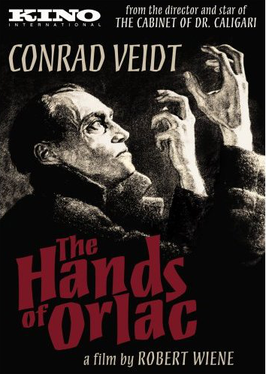
The Hands of Orlac is a 1924 Austrian silent film directed by Robert Wiene and starring Conrad Veidt, Alexandra Sorina and Fritz Kortner. It is based on the novel Les Mains d'Orlac by Maurice Renard.

The Love Express is a 1931 German musical comedy film directed by Robert Wiene and starring Georg Alexander, Dina Gralla and Joseph Schmidt. No print of the film is known to survive, and it is therefore a lost film. It is based on the operetta Es lebe die Liebe by Alexander Engel and Wilhelm Sterk. It was one of a cycle of operetta films made during the early sound era. A French-language version, Venetian Nights, also directed by Wiene, was released the same year.
He This Way, She That Way is a 1915 German silent comedy film directed by Robert Wiene and starring Max Zilzer, Bogia Horska, Otto Treptow and Manny Ziener.
Panic in the House of Ardon is a 1920 German silent crime film directed by Robert Wiene and starring Stella Harf, Max Kronert and Paul Mederow. The film was finished by August 1920, but did not have its premiere until July 1921. It also had several alternative titles including Die Welteroberer. A crime syndicate attempts to discover the scientific secrets of the chemical company Ardon. The film was made in the Expressionist style that had been used for Wiene's earlier hit The Cabinet of Dr. Caligari. It features the popular detective Stuart Webbs, closely modeled on Sherlock Holmes.
Playing with Fire is a 1921 German silent comedy-drama film directed by Georg Kroll and Robert Wiene and starring Diana Karenne, Vasilij Vronski, Ossip Runitsch, and Anton Edthofer. It was shot at the Babelsberg Studios in Berlin. The film received a generally positive reception from critics, although some were doubtful about the blending of farce and tragedy.

Leontine's Husbands is a 1928 German silent comedy film directed by Robert Wiene and starring Claire Rommer, Georg Alexander and Carl Walther Meyer. It was based on a play by Alfred Capus. A French dancer works her way through a series of husbands, spending their money. The film received poor reviews from critics, who expected better from the director.

The Great Adventuress is a 1928 German silent comedy film directed by Robert Wiene and starring Lili Damita, Georg Alexander, and Fred Solm. Much of the film's funding came from Britain. Location shooting took place in Paris, Calais and London. The film's plot was criticised by reviews for lacking clarity.

The Night of Queen Isabeau is a 1920 German silent historical drama film directed by Robert Wiene and starring Fern Andra, Fritz Kortner, Hans Heinrich von Twardowski and Elsa Wagner. The film depicts the marriage between the mad Charles VI of France and his wife Queen Isabeau. It was shot at the Babelsberg Studios in Berlin. The film is now considered a lost film, but contemporary reviews praised Wiene's direction. The story revolves around insanity, a common theme in his films.
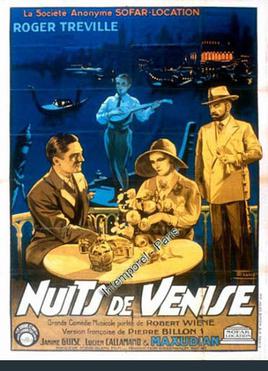
Venetian Nights is a 1931 German French-language operetta film directed by Pierre Billon and Robert Wiene and starring Janine Guise, Germaine Noizet and Roger Tréville. It was an alternative-language version of the 1931 film The Love Express, made at the Emelka Studios in Munich.
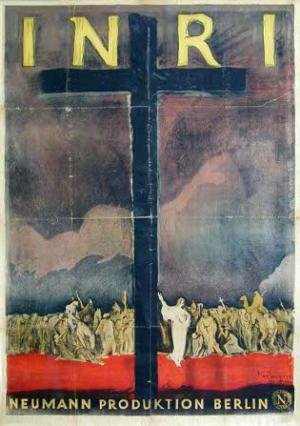
I.N.R.I. is a 1923 German silent religious epic film directed by Robert Wiene and starring Gregori Chmara, Henny Porten, and Asta Nielsen. The film is a retelling of the events leading up to the crucifixion of Jesus Christ. It was based on a 1905 novel by Peter Rosegger. It was reissued in 1933 in the United States with an added music track and narration as Crown of Thorns.

The Queen of Moulin Rouge is a 1926 Austrian silent comedy film directed by Robert Wiene and starring Mady Christians, André Roanne and Livio Pavanelli. The film is based on the 1902 play La Duchesse des Folies-Bergères by Georges Feydeau. It was the final silent film Wiene made in Austria, before returning to Germany. It was made by the Austrian studio Pan Film, with backing from the French Pathé and German Filmhaus Bruckmann companies.

The Other is a 1930 German drama film directed by Robert Wiene and starring Fritz Kortner, Käthe von Nagy and Heinrich George. It was based on the 1893 play Der Andere by Paul Lindau. It was shot at the Terra Studios in Berlin. A French-language version The Prosecutor Hallers was shot by Wiene immediately afterwards in the same Berlin studio, but with different actors.
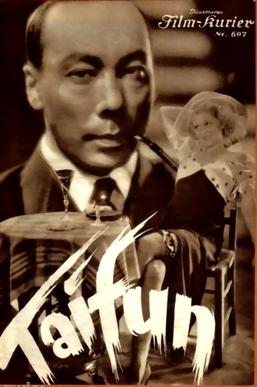
Typhoon is a 1933 German drama film directed by Robert Wiene and starring Liane Haid, Viktor de Kowa and Valéry Inkijinoff. It was based on the 1911 play Typhoon by the Hungarian writer Melchior Lengyel. It was the last German film made by Wiene, who had been a leading director of German silent cinema.

A Night in Venice is a 1934 German-Hungarian operetta film directed by Robert Wiene and starring Tino Pattiera, Tina Eilers and Ludwig Stössel. It is loosely based on the 1883 operetta Eine Nacht in Venedig by Johann Strauss II.

Ultimatum is a 1938 French historical drama film directed by Robert Wiene and Robert Siodmak and starring Dita Parlo, Erich von Stroheim and Abel Jacquin. The film's plot is set in 1914 against the backdrop of the July Crisis between the assassination of Archduke Franz Ferdinand and the beginning of the First World War. It focuses on the relationship between a Serbian officer and his Austrian-born wife and their involvement in espionage between the countries.
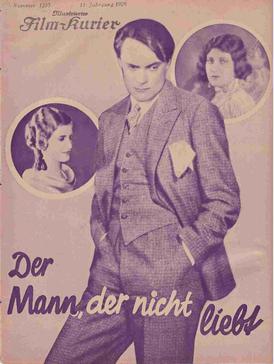
The Man Without Love is a 1929 French-German silent drama film directed by Guido Brignone and starring Gustav Diessl, Ágnes Eszterházy, and Harry Hardt. It is based on the play Kean by Alexandre Dumas.
Victim of Society is a 1919 German silent drama film directed by Willy Grunwald and starring Conrad Veidt and Kurt Brenkendorf. Originally shot in 1918, the film was not released until 1919. It is now considered a lost film.
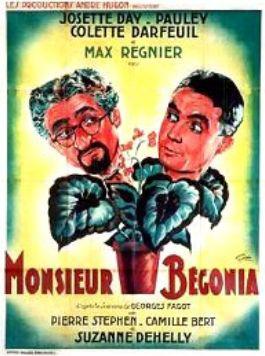
Monsieur Bégonia is a 1937 French comedy film directed by André Hugon and starring Josette Day, Paul Pauley and Colette Darfeuil. The film's sets were designed by the art director Émile Duquesne. It was remade in Italy in 1939 as L'amore si fa così.















